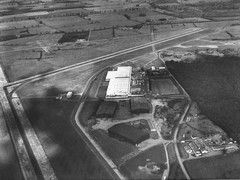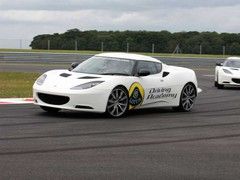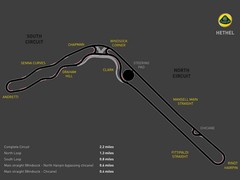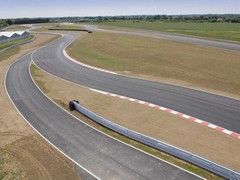New Hethel, new Lotus
Lotus handling guru Matt Becker on the 'new' Hethel test track and how it'll shape future Lotuses
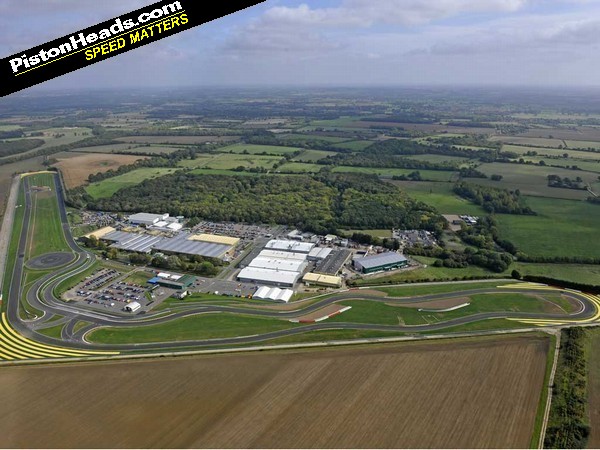
Engagingly shabby, bumpy and not far removed from its roots as a base for USAAF B24 Liberators in the second world war, for those passionate about Lotus and its roots the original Hethel test track was an important part of the brand identity. Already wary of the sudden influx of ex-Ferrari personnel recruited by Bahar, the apparent intention to subvert Hethelinto some sort of Maranello-lite, complete with its own ‘Fiorano’ test track, could be interpreted as yet another example of new Lotus abandoning the things that made old Lotus unique. Opened last year by Nigel Mansell leading a cavalcade of classic Lotus racing cars in his old 81B, Bahar has done little to calm these fears with soundbites like “mentally and psychologically seeing this project accomplished demonstrates that, step-by-step, our vision is becoming a reality.”
Born and bred
So who better to discuss new Hethel versus old Hethel than Matt Becker, second generation Lotus development guru and a man who, well, first bounced around the track’s bumpy old surface as a glint in his father’s eye and hasn’t stopped since.
With all the politics of late it’s nice to be back at Hethel to talk about and drive new products, and you’ll be reading and seeing more about these in the coming days. While there, we thought it a good opportunity to get to grips with the new Hethel track and explore the influence it’s had – and will have – on the new crop of Lotus products coming our way.
So, will polishing up Hethel’s rough edges hamper Lotus’s legendary ability to engineer a compliant, composed chassis that can handle broken UK B-road like no other? “I don’t think it’ll change the approach we had with the previous track,” says Becker. “If you look at the basic layout, old versus new, it’s actually quite similar to when Alistair Macqueen redesigned it back in 1999. He put a lot of effort into designing a track that would work out any issues with the car and if you look at the previous layout it was really good for everything from transient behaviour to high speed stability – especially here at Windsock which was always good for-”
“Sh*tting yourself!” comes the shout from the other side of the room from Chris Harris, looking up from the press bumph on the Exige S he’s about to drive for a forthcoming video.
“Yes,” laughs Becker. “It was pretty mad in places. We used to talk about the potholes around the track but they had got pretty bad. There used to be a bump on the entry to Windsock and another surface change halfway round. For us it was really quite useful because you can think about more than just the yaw stability of the car, as you’re getting a vertical movement as well as a lateral one.”
Authentic
Sudden changes from fresh(ish) tarmac to original 1940s concrete were also handy, if unpredictable, and a great way of cutting journalistic egos down to size on the exit from the old steering circle – now renamed Andretti.
That circle has now been moved to the centre of the circuit which is, says Becker, “really good for driver training, but for the younger engineers who want to practise a bit like I did it’s a bit close to the factory and everyone can see when you spin now!”
So if the old track’s quirks and bumps were so good for chassis development why change it? Simply – motorsport. “We wanted to grow the motorsport side of the business,” says Becker, “and if you’re running race cars and single seaters you need something smooth for the aero. Some people were concerned about us smoothing the circuit but it’s kind of a dual-purpose track now. And the great thing is the roads we’ve got around here are really crap, which is great for things like steering feel.”
So it’s now FIA-approved for testing, wider, smoother and with more run-off than before. Though not entirely sanitised, Windsock still “a focused corner” as Becker puts it and one that even road cars like the Evora and new Exige will pull 120mph around. And the run-off on the exit to the Rindt Hairpin is … well … there isn’t any.
The fast complex at the start of the lap is a perfect example of how the new layout tests a car too. “The car is loaded up for a long time and you can really see if the balance is correct,” says Becker. “You’re asking is there too much understeer, is there too much oversteer, does the yaw behaviour feel correct – you can actually pretty much hold one input all the way around and the idea is to keep it stable, keep it linear and make sure that any input gives the expected output.” One car that doesn’t in this situation is, interestingly, Becker’s own 997 Carrera which, he says, has “quite nice” steering but a habit of, as he puts it, “gaining on you” as you try and hold a constant line around the same complex.
Meanwhile, back at the Nordschleife...
Inevitably the Nurburgring figures in the road car development programme, the Nordschleife’s bumps and surface changes a well respected test of any chassis. But, like Jaguar, Lotus doesn’t set its cars up to chase lap times per se.
“We don’t go there to set the dynamics of the car, we go there to check stability,” says Becker. “I can’t think of anywhere else where the speeds are so high and the car needs to feel stable. Customers will take their cars there too so we need to be sure it works.”
So a lot has changed from the days when Hethel was little more than an old runway that doubled up as a test track and somewhere for Colin Chapman to land his plane on his way back from races. The broken old concrete has gone but the knowledge gleaned from it lives on with Becker and his colleagues. And, as you’ll see shortly, when it comes to the product the Hethel influence is still at the core of every new Lotus.
A lap of Hethel with Matt Becker, with corner by corner commentary
Lotus has wasted a lot of precious money in recent years in developing flops (Evora, Europa).
What's more irritating is the "group thinking" which surrounds every thing Lotus makes. They are able to develop wonderful cars but their products don't get criticised enough when they deserve so, there's always a manager/politician/economic downturn to blame, not the cars. This is nonsense.
I've driven an Elise 111 at the Nurburgring, a turbocharged VX220, a 2-11 in Imola; all of these cars are excellent (except for the transmission) and they deserve the credit they have.
On the contrary, I've never read an article about the Evora which pointed the problems with this car: its proportions are wrong, the roof is ugly, the transmission is terrible, the engine is all but sporty, the price is too high. And the sales reflect that.
I'm the first who wants a healthy Lotus developing sound products but there has to be someone willing to give frank feedback. Until then, feel free to wear your pink glasses and stare at the death of another glorious British manifacturer.
Gassing Station | General Gassing | Top of Page | What's New | My Stuff

